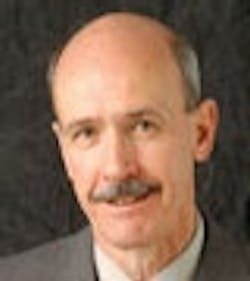Innovation insurance
IN THE midst of preparing the April article that announced the three winners of our inaugural Innovator Awards, some of the staff here got to talking about how long an innovation remains, well, innovative. The opportunities for new technology-based machine control solutions move so rapidly that it might not take very long at all before the machine control system that dazzles customers today becomes unfit for the new demands placed on it tomorrow.
The underlying lesson there is that to reap the benefits of being regarded as an innovator in the eyes of your customers and your industry segment, youd better be successfully answering the question of what youve done for them lately.
A wonderous example of this hit the news recently. Youve heard of Mountain View, Calif.-based Silicon Graphics. Founded in the early 80s, SGI was the uber-innovator in advanced 3-D graphics hardware. The company says 15 of the top 25 all-time box office hits feature visual effects, scenes, and characters that were developed using Silicon Graphics technologies. The company's reputation might have reached the pinnacle at the 1998 Academy Awards--its technology was behind the three nominees for visual effects, a group consisting of Titanic, Jurassic Park, and Starship Troopers. As I browsed around the web looking for other contributions, I found that its blazingly fast computer workstations and were behind many of the special effects in Forrest Gump, Shrek, and Lord of the Rings.
This really wasnt that long ago.
On the news wires, Silicon Graphics now is referred to as a struggling maker of high-performance business computers. The deeply in debt company filed for Chapter 11 bankruptcy protection on May 9th. Most of the demand for Hollywood special effects these days is being handled by ever-more-powerful and ever-cheaper desktop PC solutions, and the company says its declining revenues are the result of poor investments and competition from IBM, Hewlett-Packard, and others.
Unparalleled innovator one day. What have you done for me lately? the next.
An equally wonderous counterpoint to this occurred the same day that Silicon Graphics announced its bad news. We were wrapping up our annual three-day AutomationXchange in Phoenix with debriefings of the attending machine builders. Its a critical step for us to make sure we understand what these attending controls professionals liked or disliked about their experiences. Its the best way to make any appropriate adjustments for next years reprise.
We received a lot of very, very positive feedback, some of which youll find summarized in Jim Montagues lead news story on page 12.
This is one of the points that Tommy Pool, electrical engineering manager at packaging machine builder Kliklok-Woodman, made about the value he got from our event, which brings industrial OEMs with a well-defined automation spending agenda together with vendors weve identified as well-matched to meet their stated automation and controls needs. Its an opportunity to step aside and dream a little bit, said Tommy. We can see that our machines can do so much more, if we take that time to be creative. This event causes you to dream and think outside the box.
I think he could have used the word innovate somewhere in that statement, dont you?
The machine builders who attended the event are strapped for time just like the rest of us. That they made the commitment to spend a concentrated amount of that time with us to solve todays problems and think about tomorrows opportunities, makes me pretty sure theyre unlikely to hear a customer say to them, What have you done for me lately?


